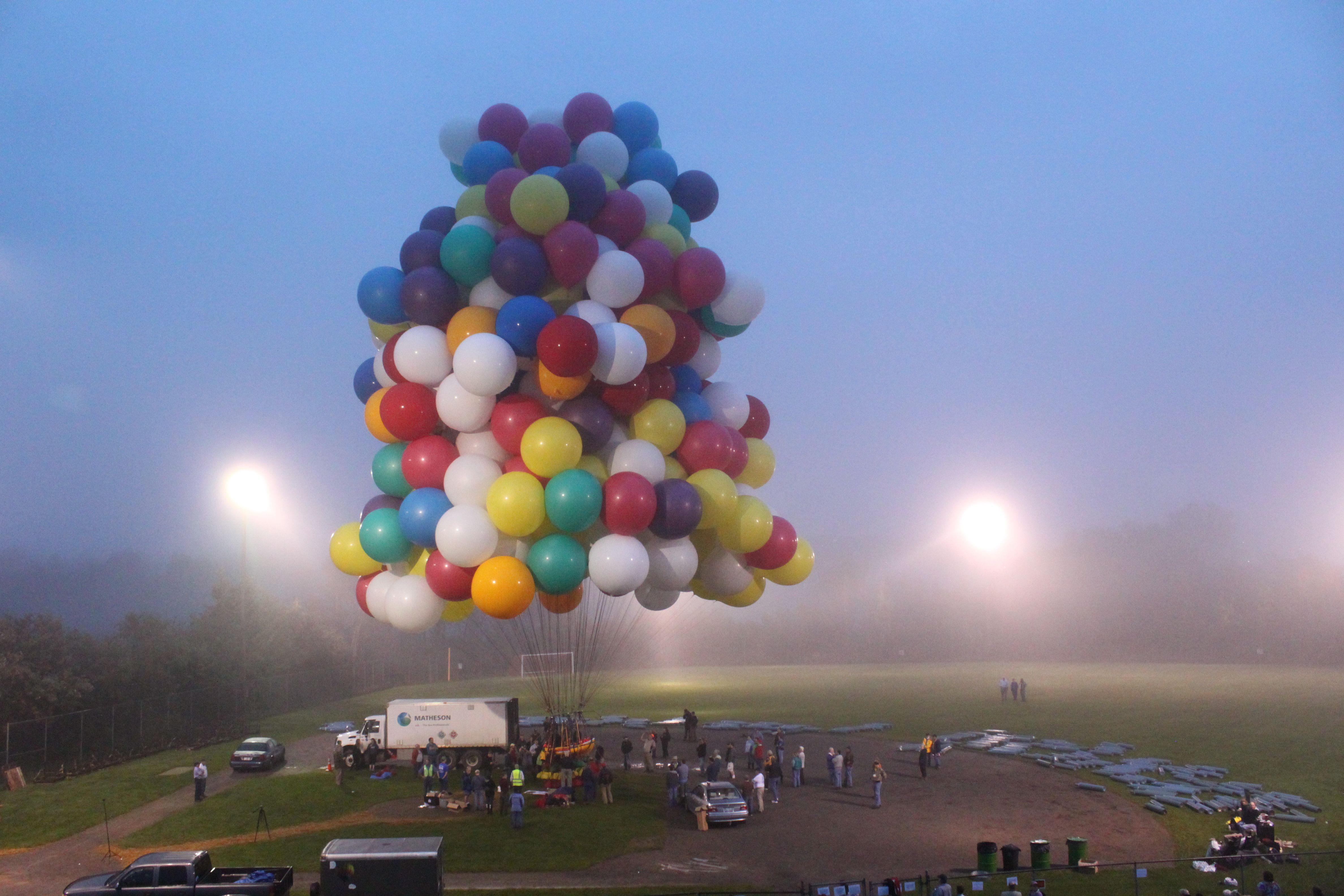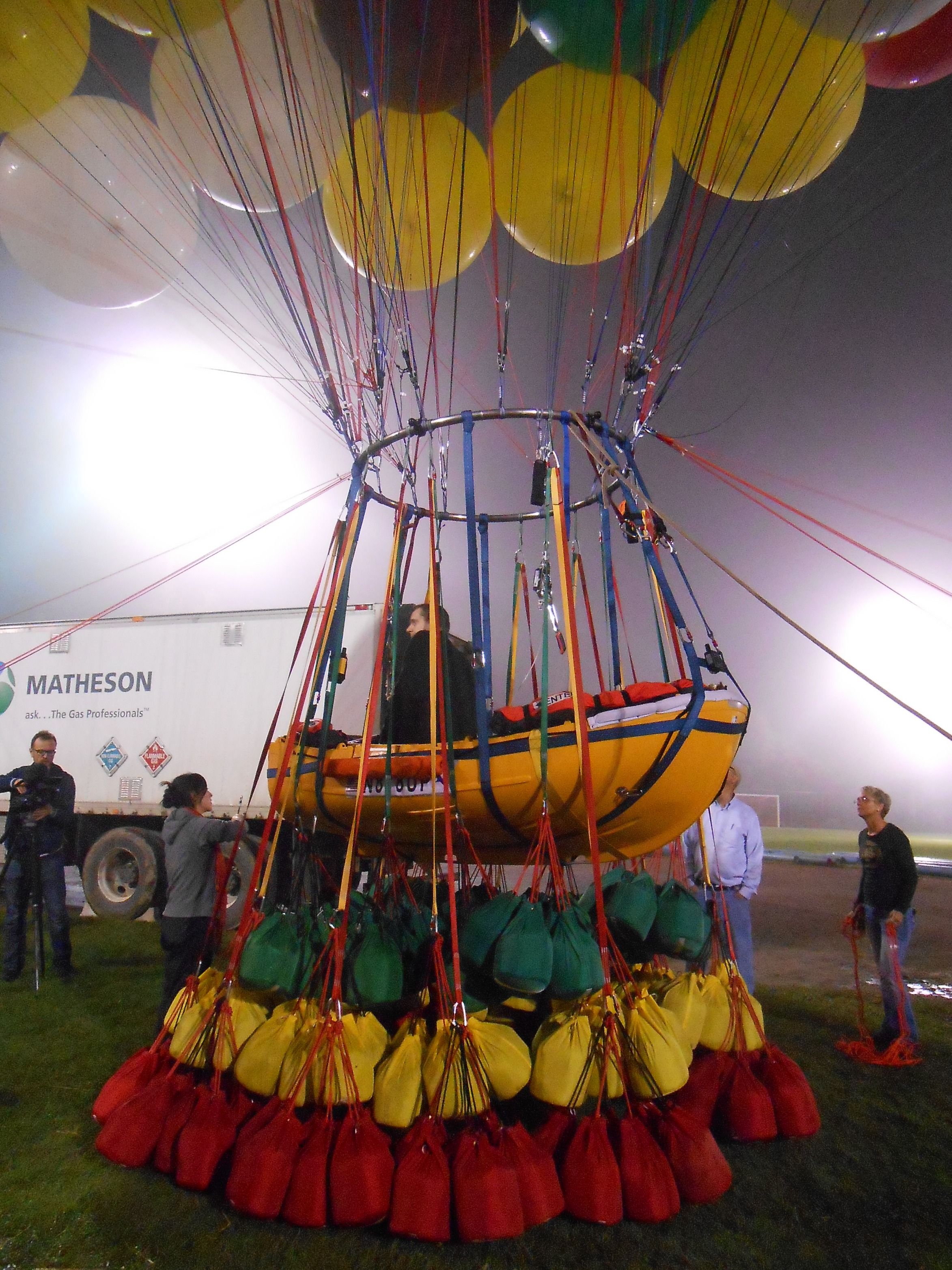Photo courtesy of Paul S. Stumpf
Despite two years of planning, when balloon pilot Jonathan Trappe approached the rugged coast of Newfoundland 12 hours after launching his cluster-balloon system from Caribou, Maine, last Thursday, he said it was clear that he had no choice but to land — his weather forecast promised a landfall in Europe in less than 100 hours, but he was unable to stabilize the aircraft’s altitude. “Tremendous, Beautiful, Magnificent Failure!” he wrote in an email to his crew and supporters, from Newfoundland, on Sunday. The system rose as high as 23,000 feet, and descended almost to the surface of the sea, and he was using too much ballast in fruitless efforts to establish control. “I can’t make it to Europe,” he wrote. Approaching the coast, shortly after sunset, he saw mountains ahead in the dark, descended into treetops, cut away his balloons, and landed safely in a bog.

Trappe’s gondola was a sturdy lifeboat built in Maine, called a Portland Pudgy, and he spent the night in the boat, rigging an exposure canopy and donning his cold-weather gear. Authorities were notified that he was safe and not in need of rescue. He posted a wry note to his Facebook followers: “Hmm, this doesn’t look like France.” The next day, a local TV news crew reached him via helicopter, and gave him a lift out. “The destination was always unknown, and it’s pretty grand where we’ve come in to,” he told CBC News. “It’s not the destination I set out for, but it’s kind of the way with real adventure — adventure isn’t what you planned on, it’s what you find.” Trappe said he would hire a helicopter to recover the gondola and his gear. “So perfect, this great failure that was achieved on this flight,” he wrote.”I land a much richer man than I launched,” he wrote, though the expedition, and the expensive helium supply, were funded mainly from his own savings. “I leave Canada even richer still.I return to Caribou for my friends.”


































